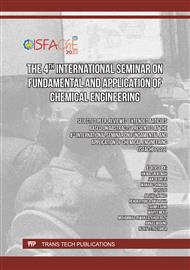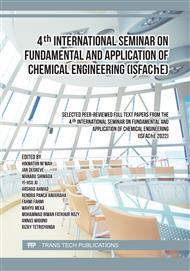p.3
p.13
p.21
p.27
p.33
p.51
p.71
p.79
Amylose Isolation of Cassava Starch with the Combination of High Shear Mixer and Centrifugation Treatment to Improve the Quality of Resistant Starch Type 3 (RS-3) Products
Abstract:
Cassava starch is a common food ingredient that has a high carbohydrate content. It can be modified into resistant starch type 3 (RS-3) that has lower glycemic index. The common production of RS-3 includes gelatinization to free the amylose from the granule structure, then followed by cooling to induce retrogradation. The granule structure of cassava starch resists the structure disintegration so that it is unable to produce high resistant starch content in the retrogradation process. In this study, High Shear Mixing (HSM) was used to help the gelatinization process to provide cassava starch structure disintegration. The centrifugation was carried out to separate the low free-amylose and high free-amylose liquid layers. This paper examines the relationship between the effect of variations in rotational speed (rpm) of HSM on the amount of resistant starch as a percentage of dietary fiber. A 1:20 starch-water suspension was processed using an HSM with rotational speeds of 9.000, 10.000, 11.000, and 12.000 at a temperature of 95°C for 15 minutes. After the stirring process, the water starch suspension was separated by centrifugation for 30 minutes. Then the samples were cooled in the refrigerator for 24 hours, then dried under freeze-drying method. The product that has been obtained is then analyzed by Total Dietary Fiber (TDF), amylose, and carbohydrate analysis. From the analysis of the result, this method can increase the TDF content of the product up to 14,66% at 12.000 rpm.
Info:
Periodical:
Pages:
13-19
Citation:
Online since:
January 2024
Keywords:
Price:
Сopyright:
© 2024 Trans Tech Publications Ltd. All Rights Reserved
Share:
Citation:



